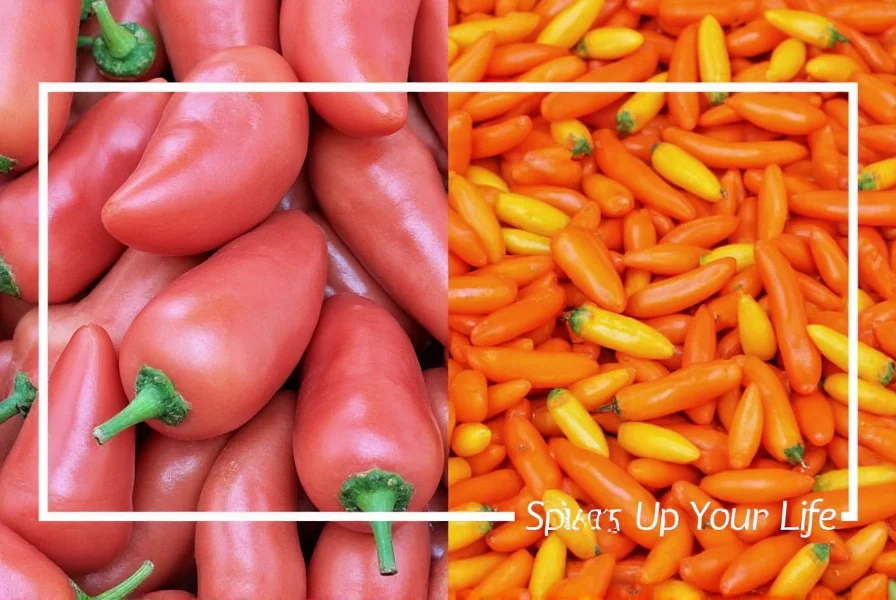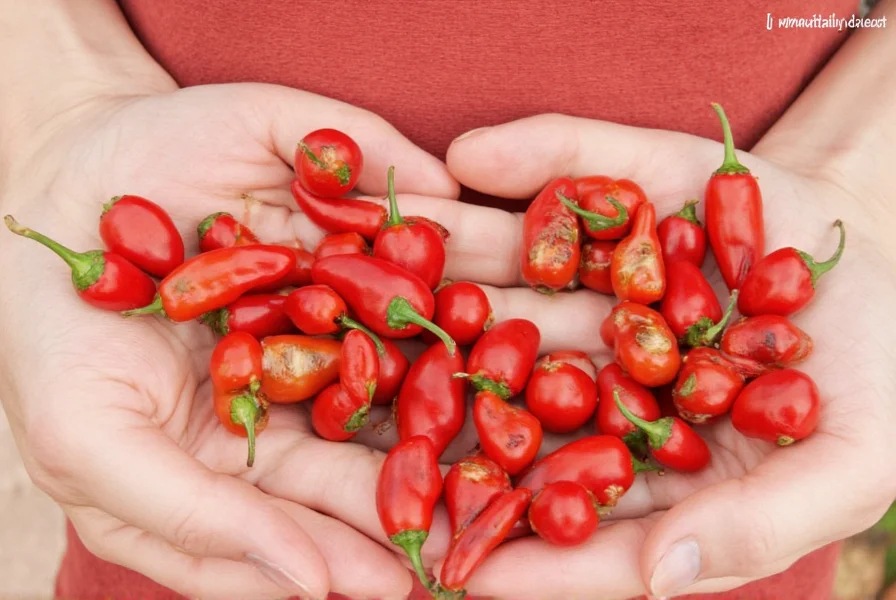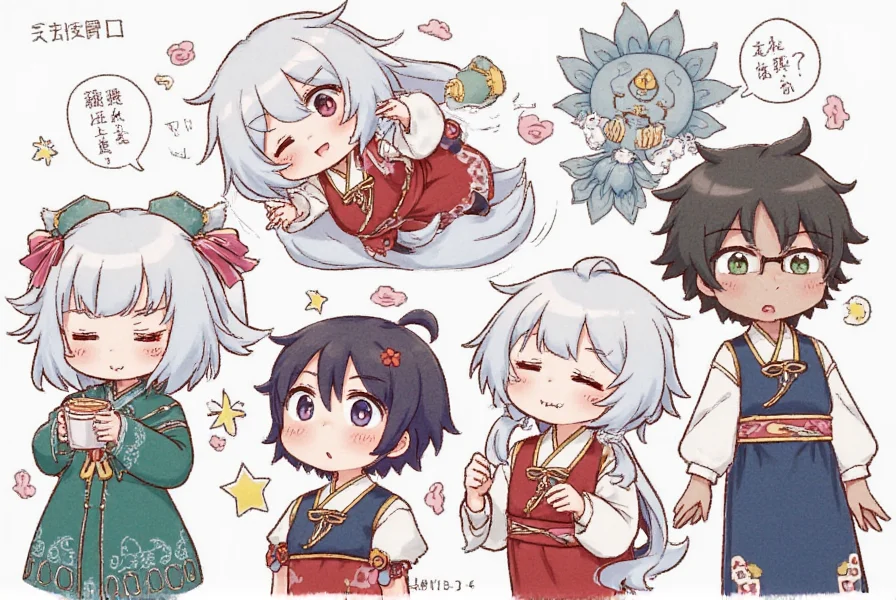Red jalapeños typically range from 3,000 to 10,000 Scoville Heat Units (SHU), placing them in the mild-to-medium heat category. This article explains the exact heat levels, why they vary, how they compare to green jalapeños, and practical cooking tips for safe and flavorful use.
Table of Contents
- Introduction to Jalapeños
- Understanding the Scoville Scale
- Red vs Green Jalapeños: What's the Difference?
- Red Jalapeño Scoville Units: Heat Range Explained
- Cooking with Red Jalapeños: Practical Tips
- Buying Guide: Choosing the Best Red Jalapeños
- Frequently Asked Questions
- Conclusion
Introduction to Jalapeños
Jalapeños are one of the most recognizable chilies in the culinary world. Native to Mexico, these medium-heat peppers have found their way into kitchens around the globe. They're commonly used in salsas, nachos, tacos, and even pickled for added flavor.

The red jalapeño is simply a mature version of the green jalapeño. As jalapeños ripen on the vine, they turn from green to red and develop a richer flavor profile — and often more heat!
Understanding the Scoville Scale
If you've ever wondered why some peppers make your mouth tingle while others feel like fire, you can thank the Scoville scale. Developed by pharmacist Wilbur Scoville in 1912, this scale measures the spiciness (or pungency) of chili peppers based on their capsaicin content — the compound responsible for that burning sensation.
| Pepper | Scoville Heat Units (SHU) |
|---|---|
| Bell Pepper | 0 SHU |
| Green Jalapeño | 2,500–8,000 SHU |
| Red Jalapeño | 3,000–10,000 SHU |
| Habanero | 100,000–350,000 SHU |
| Carolina Reaper | 1,400,000–2,200,000 SHU |
Red vs Green Jalapeños: What's the Difference?
At first glance, red and green jalapeños might look almost identical — but there's more than meets the eye. Here's a breakdown:
- Maturity: Green jalapeños are picked earlier, while red jalapeños are left to fully ripen.
- Flavor: Red jalapeños have a sweeter, fruitier taste compared to the grassy notes of green ones.
- Heat Level: Red jalapeños tend to be hotter due to increased capsaicin as they ripen.
- Use Cases: Green jalapeños are great for fresh salsas, while red ones are ideal for roasting or drying.

Red Jalapeño Scoville Units: Heat Range Explained
Red jalapeños typically range between 3,000 to 10,000 Scoville Heat Units (SHU), placing them in the mild-to-medium heat category. This range varies due to growing conditions, ripeness, and individual pepper genetics.

What Affects the Heat?
- Growing Conditions: Peppers grown in hotter climates tend to be spicier.
- Ripeness: Fully ripe red jalapeños are generally hotter than semi-ripe ones.
- Seed and Vein Content: The seeds and white veins inside the pepper contain the most capsaicin.
Cooking with Red Jalapeños: Practical Tips
Cooking with red jalapeños can elevate your meals in more ways than one. Here are some handy tricks to make the most out of this vibrant pepper:
- Roast Them: Roasting brings out the sweetness and mellows the heat slightly. Simply place them over an open flame or under the broiler until charred, then peel and chop.
- Add to Sauces: Blend roasted red jalapeños with garlic, lime juice, and olive oil for a smoky hot sauce.
- Pickle for Later: Pickling enhances flavor and allows you to enjoy them long after harvest season.
- Pair with Creamy Ingredients: Balance the heat with avocado, sour cream, or cheese for a creamy contrast.
- Use Gloves When Handling: Capsaicin can irritate the skin, so always wear gloves when chopping.
Buying Guide: Choosing the Best Red Jalapeños
Whether you're buying fresh at the market or looking for preserved options, knowing what to look for can make all the difference. Here's a guide to help you pick the perfect red jalapeños:
What to Look For
- Firmness: Fresh jalapeños should be firm to the touch with smooth skin. Avoid soft or wrinkled peppers.
- Bright Color: Vibrant red indicates full maturity and better flavor.
- No Blemishes: Check for mold, black spots, or cracks — signs of aging or damage.
Top Products to Consider
| Product | Description | Features | Best Use Case |
|---|---|---|---|
| Taco Bell Fire Sauce | A popular condiment with real jalapeño flavor | Mild heat, tangy flavor, ready to use | Perfect for tacos, burritos, and nachos |
| La Costeña Jalapeño Slices in Vinegar | Pickled jalapeños with a crisp texture | Medium heat, acidic bite, shelf-stable | Ideal for sandwiches, salads, and topping grilled meats |
| Dried Red Jalapeños (Whole) | Natural dried jalapeños for rehydrating | Intense heat, deep flavor, long shelf life | Great for soups, stews, and homemade sauces |

Who Should Buy What?
- Newcomers to Spice: Opt for milder pickled versions or sauces like Taco Bell Fire Sauce.
- Home Cooks: Whole fresh or dried jalapeños offer flexibility in the kitchen.
- Pro Chefs: Dried red jalapeños provide intense flavor for complex recipes.
Frequently Asked Questions About Red Jalapeño Heat Levels
-
How hot are red jalapeños on the Scoville scale?
Red jalapeños typically range from 3,000 to 10,000 Scoville Heat Units (SHU), placing them in the mild-to-medium heat category. This makes them noticeably spicy but manageable for most spice lovers.
-
Are red jalapeños hotter than green jalapeños?
Generally, yes. Red jalapeños tend to be slightly hotter than green jalapeños, which range from 2,500 to 8,000 SHU. This is because capsaicin (the compound that creates heat) increases as the pepper ripens and turns red.
-
Why do red jalapeños have a higher Scoville range than green ones?
As jalapeños mature and ripen from green to red, they develop more capsaicin, the compound responsible for heat. Fully ripe red jalapeños have had more time to develop this compound, resulting in potentially higher heat levels.
-
How can I reduce the heat of red jalapeños when cooking?
To reduce heat, remove the seeds and white membranes (placenta) inside the pepper, as these contain the highest concentration of capsaicin. Roasting or cooking the peppers can also mellow their heat while preserving flavor.
-
What's the best way to handle red jalapeños safely?
Always wear gloves when handling and cutting red jalapeños, as capsaicin can cause skin irritation. Avoid touching your face, especially eyes, during preparation. Wash hands thoroughly with soap after handling, even if you wore gloves.
-
How do red jalapeños compare to other common peppers in heat level?
Red jalapeños (3,000-10,000 SHU) are milder than habaneros (100,000-350,000 SHU) but hotter than poblano peppers (1,000-2,000 SHU). They're in the same heat range as serrano peppers, though serranos tend to be consistently hotter at the upper end of their range.
-
Can I substitute red jalapeños for green ones in recipes?
Absolutely! Red jalapeños will add a slightly sweeter, fruitier flavor and potentially more heat. If you're sensitive to spice, you might want to use slightly less red jalapeño than a recipe calls for green, or remove more seeds and membranes.
-
How should I store red jalapeños to maintain freshness?
Store fresh red jalapeños in the refrigerator crisper drawer in a paper bag or perforated plastic bag for up to 2 weeks. For longer storage, you can freeze them (whole or sliced) for up to 6 months, or pickle them for shelf-stable preservation.
Conclusion
The red jalapeño may not be the hottest pepper on the block, but it definitely punches above its weight when it comes to flavor and versatility. With Scoville units ranging from 3,000 to 10,000, it strikes the perfect balance between heat and flavor, making it a favorite among both casual cooks and seasoned chefs alike.
Whether you're slicing it into a salsa, roasting it for a smoky dip, or pickling it for later, understanding red jalapeño Scoville units helps you tailor your dish to your desired level of heat. So next time you reach for that red jalapeño, remember: it's not just about the burn — it's about the journey of flavor that follows.












 浙公网安备
33010002000092号
浙公网安备
33010002000092号 浙B2-20120091-4
浙B2-20120091-4